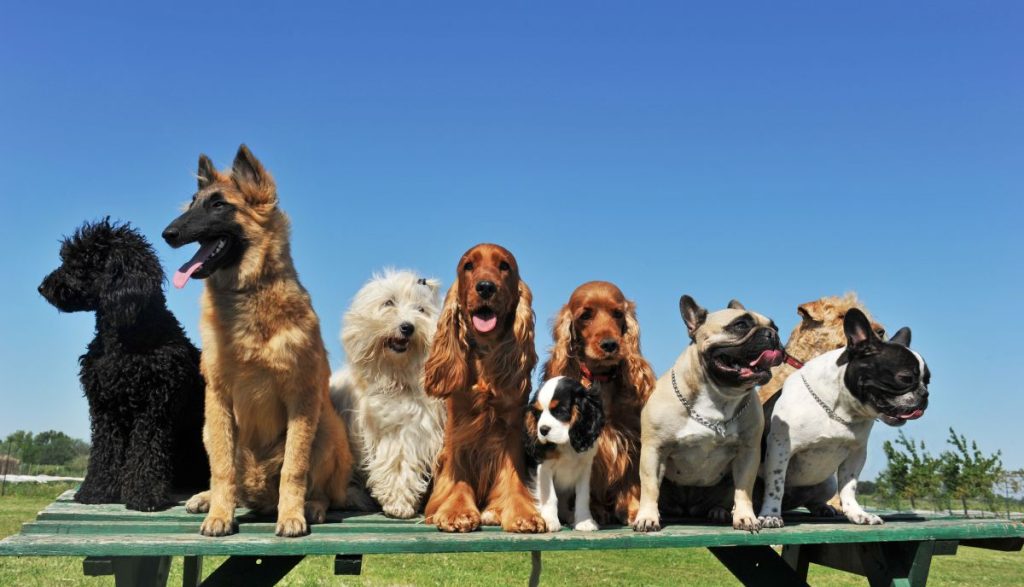For centuries, the practice of selective dog breeding has aimed to create breeds specialized for specific tasks, shaping the canine world into a diverse array of forms and functions. From the herding instincts of border collies to the guarding prowess of German shepherds and the keen hunting abilities of beagles, these specialized roles have often been attributed to corresponding structural adaptations, particularly in the skull. This long-held assumption, however, has recently been challenged by a groundbreaking study published in Science Advances, which suggests that the link between skull shape and functional specialization in dogs may be far less pronounced than previously believed.
The study, conducted by a team of researchers, employed cutting-edge 3D reconstruction techniques to analyze the skulls of 117 dogs representing 40 different breeds, alongside 18 wild canid species. This comprehensive approach allowed for a detailed comparison of skull morphology across a wide range of canine forms, revealing a surprising degree of overlap in skull shapes among domestic dog breeds. This unexpected finding implies that the distinctive physical traits often associated with specific breeds might not, in fact, be the primary drivers of their specialized abilities, at least concerning tasks related to biting and smelling. While breed-specific physical differences are undeniable, their functional significance, particularly in the context of skull morphology, appears less clear-cut than traditional assumptions suggest.
The implications of this research extend beyond simply challenging established beliefs about breed-specific adaptations. It also calls into question widely held stereotypes about certain breeds, particularly those often perceived as inherently dangerous due to their physical characteristics. Breeds like pit bulls, frequently associated with strong bites and aggressive behavior, often face prejudice based on assumptions about their skull structure. However, the study found no evidence of structural differences in pit bull skulls that would inherently predispose them to biting or make their bites more dangerous than those of other similarly sized breeds. This finding underscores the importance of moving beyond simplistic generalizations based on physical appearance and recognizing the complex interplay of factors that influence canine behavior.
Further challenging conventional wisdom, the study also found no distinct olfactory adaptations in the skull morphology of breeds historically bred for scent work. This contradicts the common assumption that breeds like bloodhounds possess unique structural features that enhance their olfactory capabilities. The absence of clear-cut olfactory adaptations in skull shape aligns with previous research demonstrating that breeds not traditionally associated with scent work, such as pugs, can sometimes outperform breeds like German shepherds in odor discrimination tasks. This highlights the limitations of relying solely on physical characteristics to predict performance and emphasizes the role of other factors, such as training and individual variation, in shaping a dog’s abilities.
If skull shape does not play the decisive role previously attributed to it in determining a dog’s aptitude for specialized tasks, what factors do? The researchers suggest that individual personality and temperament, along with training and experience, likely contribute significantly more to a dog’s suitability for specific roles than mere physical morphology. The remarkable diversity in appearance achieved through selective breeding appears to have had a less pronounced impact on skull structure than anticipated, suggesting that behavioral traits and learned skills are paramount in shaping a dog’s functional specialization. This emphasizes the importance of considering individual characteristics rather than relying solely on breed stereotypes when evaluating a dog’s potential.
The study also provided valuable insights into the contrasting skull morphologies of domestic dogs and their wild canid relatives. Unlike the significant overlap observed among domestic breeds, wild canids exhibited skull shapes closely aligned with their ecological niches and functional needs. Wolves, for instance, possess elongated snouts well-suited for both hunting and scent detection, reflecting the demands of their predatory lifestyle. Interestingly, the skull shapes of foxes showed significant overlap with certain domestic breeds, such as terriers, which were historically bred for pursuing small prey. This convergence in skull morphology between foxes and terriers suggests that similar functional pressures, even across different evolutionary lineages, can lead to the development of analogous structural adaptations. The study’s findings therefore underscore the complex interplay between evolutionary history, selective breeding, and functional demands in shaping the remarkable diversity of canine skull forms.










